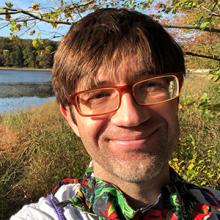Sloan Sports Conference 1st Day Digest: Critical Thinking At the Fore of Sports

(Inside Science) -- Friday was the first day of the Sloan Sports Analytics Conference and a fascinating day. People from all parts of sports have been presenting their research and debating their viewpoints, discussing everything from how to figure out which players are best able to recognize curveballs to describing how franchises are valued.
Check out the conference website and peek at the schedule,which is chock full of info for serious students of sports: www.sloansportsconference.com.
At that link you can even read the research papers.
There might be some selection bias at work here, but there’s a theme in the presentations I have attended: the absolute revolution in theway sports are run in the last 20 years or so. In large part it’s about gathering data and figuring out what to do with it.
At the first panel discussion, which featured significant movers and shakers in the four major American sports, the executive vice president of Major League Baseball Rob Manfred, said the biggest change in the last 22 years of labor negotiation has been the “balance of who’s driving the deal” between the players and owners. It used to be lawyers, he said, but now it’s people with analytical backgrounds. He said they are looking at revenue questions – basically economic models and forecasts.
The panelists also talked about how the different leagues differ in their popularity and approach in different countries.
I then attended four straight research paper talks. Most came down to this: sports commentators and fans have certain unexamined assumptions– the researchers decided to look at one in detail.
The first was about how much experience matters in success in the NBA playoffs. After getting tired of hearing commentators talk about inexperienced teams and why his favorite Portland Trail Blazers wouldn’t succeed, James Tarlow decided to examine the impact of experience, of both players and coaches, on winning. He investigated which forms of experience show a causal relationship to postseason winning, looking at player, coach, and team experience levels. One of his major conclusions was that teams that play together for a significant amount of time will win more playoff games.
The second was about a new way to rank men’s college basketball teams, presented by an individual with a background in physics and math – Mark Bashuk, an analyst with a petroleum company. His work took off from something called win probability, which looks at a given game situation (when one team leads by so many points with a given amount of time remaining – how often does the leading team win the game) and uses it as a way to garner additional information to use in ranking teams.
The third presentation, by Robert Ayer, was about trying to figure out what combinations of basketball players work best together. His review of the data showed that certain combinations of players performed better than the sum of their parts, seemingly just by the virtue of having good combinations of players. He also showed which combinations performed worse than would usually be expected.
The last in that sequence was by a medical statistics professor (John Guttag of MIT) trying to figure out how to predict what would be the next pitch in a baseball game. This was pretty cool because it brought together techniques from a completely different industry and used them in order to predict the next pitch within the context of the game situation.
Then I went to a session about baseball analytics – a panel featuring two team executives (Houston Astros President Jeff Luhnow and Cleveland Indians President Mark Shapiro), legendary agent Scott Boras, an ex-player and nowfront office official Rocco Baldelli, and stats godfather Bill James. Hearing these people talk about what matters to them (while not releasing any trade secrets) was fascinating. Boras was particularly eloquent in discussing how there are different sets of people with differing sets of baseball knowledge and that there is a challenge in helping all those people talk to each other, from players to coaches to the front office, to psychologists and more. Shapiro said that in the front office there is a constant thirst for more information –but of course, I would add, you need to be able to recognize which is thereliable information.
I also attended a session about training baseball players to recognize pitches. This is a very significant skill because there is so little time for a batter to take in information about a pitch and decide if he should swing. The experiment used videos of a pitcher, but they went to black an eye blink after the pitcher let go of the ball. Then the batters had to learn to detect what kind of pitch was being thrown in a severely limited amount of time (roughly150 milliseconds). The researcher showed shocking success in terms of performance stats, but I have to investigate the technique more to find out how helpful it is.
Then I took in some info about blood chemistry as it relates to athletic success. Next was a presentation by a company called Sportvision.They are making objective all sorts of measures that have previously been subjective – from collecting info like angles and speed of balls coming off the bat to collecting data about where a pitcher is releasing the ball. A lot ofthe information is freely available and the amount of data is incredibly large,but people are using it to research all sorts of fascinating things about defense, pitching, and more.
My final sessions on Friday were the finalists in theresearch paper competition. Both were research projects addressing basketball. I’ll share more on those in a later blog.

